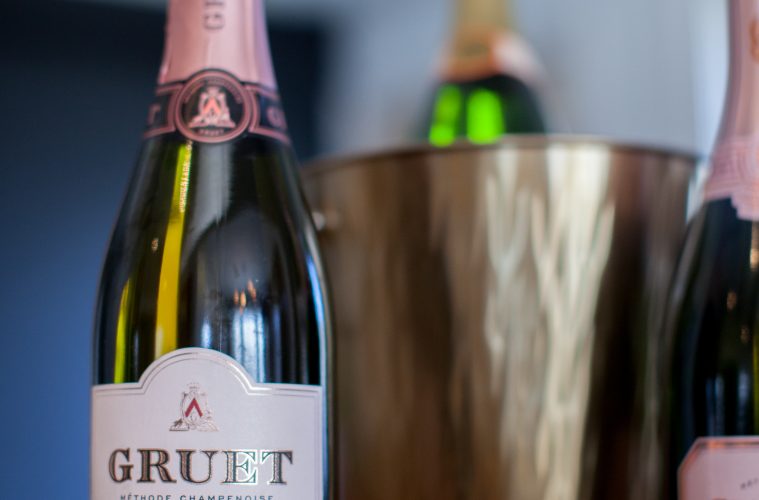At any given time of the year, I have at least one bottle of bubbly in my fridge. While sparkling wine is the requisite toast for New Year’s Eve and special occasions, it’s also a fantastic choice for Tuesday night take-out. There’s something uplifting in its effervescence, bracing in its crisp, bright acidity. As Charles Dickens once said: “Champagne is one of the elegant extras
in life.” In other words, don’t save your sparkles.
Thankfully, there’s a sparkling wine to meet every budget. Maia Merrill Gosselin, owner of Sip Wine Education in Swampscott, says price is not the only factor to consider when choosing the right one. “What makes a good sparkling wine is the combination of quality grapes, yeast, winemaker skill, region, and time aging in the bottle. Don’t pick a sparkling wine simply because it has a fancy label and celebrities drink it. There are some exceptional bubblies that cost less than $15.”
Not all bubbles are created equal, both in price and quality. The difference between champagne and all other sparkling wines is simply geography; champagne is produced in a specific region in France and often considered the best—and most expensive. Popular styles that are less expensive—though just as delicious—are cava from Spain and prosecco from Italy. Every country has its own style of sparkling wine depending on the region and types of grapes used, including the United States. The most common taste profile is labeled “brut,” meaning dry; however, styles like Italian Moscato d’Asti or any sparkler labeled “demi-sec” are sweet.
Merrill Gosselin’s favorite is crémant: “If you don’t know about this category, you are missing out!” Crémant is made outside the Champagne region in France using the same process, called méthode champenoise, or the traditional method, which refers to the process of secondary fermentation in the bottle. “I love these wines because they are so high in quality while being affordable. Crémants range from $10 to $25; they have the pedigree without the champagne price tag! I am always impressed when a restaurant has a nice by-the-glass crémant on its list; it shows me that the bar manager understands quality and affordability,” says Merrill Gosselin.
Sparkling wine is often served as an apéritif before a meal, but pairs incredibly well with a variety of foods from main course to dessert. “Bubbles act as a palate cleanser, and the acidity typically cuts through rich and fatty foods,” explains Merrill Gosselin. Her favorite pairings include cheeses like Brie, Gruyère, and Gouda, strawberries, oysters, smoked salmon, foie gras, buttered popcorn, fried foods, and salty brownies.
So start stocking your fridge with sparkling wine—after all, isn’t every day a special occasion?

